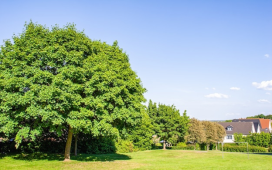If you need plastering tips or help to choose between the two types of plaster this article written by the Swindon Plasterer will help.
When it comes to plastering walls, you must choose a suitable plaster and apply it correctly. Plasters are designed to fill cracks or holes in walls, floors, ceilings, and other surfaces. They are typically applied over drywall or other wall-covering materials.
Although plaster come in an assortment of colours, textures, and finishes, they all have the same purpose – to conceal imperfections in walls and floors. To choose the best plaster for your project, consider these four factors: the type of surface it will cover, its ability to absorb moisture, its appearance, and the available finishing options.
What is plastering?
Professional plastering refers to applying dry plaster onto a surface to create a smooth, hard, and durable finish. This process’s primary purpose is to protect the surface from damage and improve its aesthetics. If you are unfamiliar with plastering, it is essential to understand its properties.
Distinct types of plasters are available for different applications. Before applying, it’s recommended to prepare the area and assess the plaster by using small amounts. Typically, you can mix the plaster with water and sand to create a paste that can be easily spread and adhere to the treated surface. Once it dries, the finished product appears like painted drywall.
There are two main types of plasters: drywall compound and cementitious plaster. While both are effective, drywall has several advantages over cementitious plaster.
Drywall compounds consist of water, sand, and other elements that enable them to penetrate fissures in walls, facilitating plaster application and smoothing out wall blemishes. They also exhibit superior adhesion to stone, brick, and concrete surfaces.
Cementitious plasters appear finished with minimal finishing, but they can be challenging to apply and necessitate additional procedures before they are entirely dry. Additionally, they tend to contract as they set, necessitating extreme caution during application.
In general, cementitious plasters perform optimally on walls constructed of masonry or block materials (such as brick, concrete blocks, or stone), wood studs, hawk boards, metal studs, and lath/plasterboards. They also function well on ceilings, floors, and countertops.
Types of plaster
Plaster comes in several types, made from natural or synthetic materials. Natural options comprise lime, cement, and gypsum, which are lightweight, porous, and easy to apply. Conversely, synthetic plasters are typically heavier and more robust than traditional plaster, devoid of organic components and instead consisting of minerals like silica sand, calcium sulphate, quartzite, and dolomite stone.
Natural plasters tend to exhibit a more rustic appearance, while synthetic plasters are brighter and more polished, requiring additional care to maintain their cleanliness. When selecting a plaster, ensure it is entirely free of dust, dirt, and debris, particularly in the case of limestone plasters, which have been known to release hazardous chemicals into the air when exposed to sunlight.
Selecting the best plaster for your project is quite straightforward. Decide if it will be used for indoor or outdoor use. Interior plaster is usually lightweight, porous, and appropriate for flat surfaces, while external plasters are thicker and more apt for uneven surfaces.
How to choose the right plaster?
Whether it will be used for interior or exterior purposes, interior plasters are generally lightweight, porous, and suitable for flat surfaces, while exterior plasters are heavier and more suitable for uneven surfaces
Decide on the desired consistency – whether you need a plaster that is easy to spread or one with a thicker texture for better durability and control. Additionally, consider the moisture absorption level required based on your area’s humidity.
A thinner, lightweight plaster is typically adequate for areas with low humidity. On the other hand, regions with heavy rainfall and snow may require a thicker, heavier plaster to minimize the risk of cracking.
Another crucial factor to consider is the plaster’s drying and curing time.
Plaster dries in approximately two hours and cures in an additional hour. Applying multiple coats of plaster can expedite the process, reducing the risk of cracking during application and curing.
Lastly, checking the plaster label to ensure it complies with all health requirements once you have found the right one for your project.










